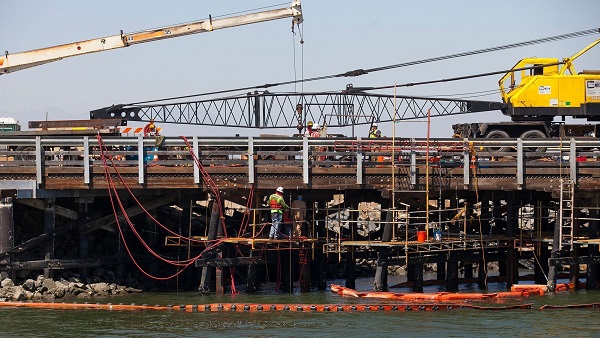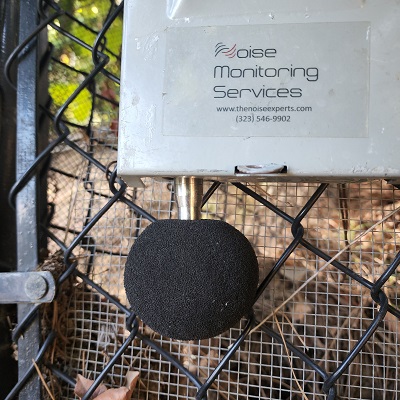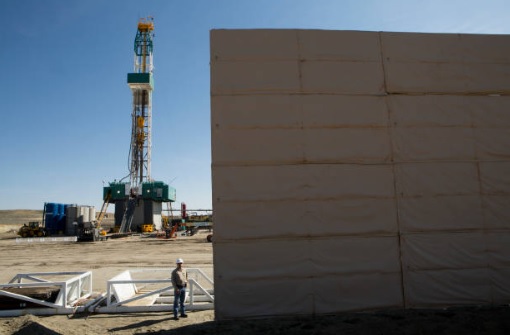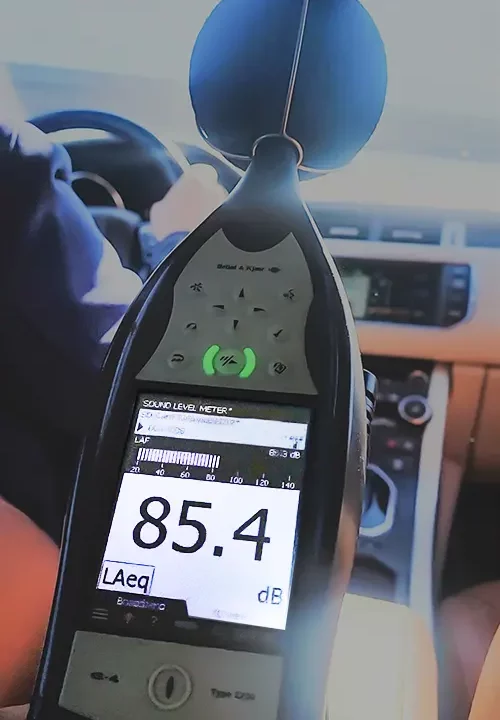
NMS Selected for Huntington Beach Underwater Noise Monitoring Project
October 3, 2017
Monitoring the LA Metro
March 9, 2019As a provider of acoustical services in Colorado, we’ve gained extensive experience in dealing with the Colorado Oil and Gas Conservation Commission (COGCC) noise standards. These regulations are designed to maintain an acceptable level of noise at nearby neighbors to drilling and operations sites.
As drilling sites get closer to residential areas, there is more potential for noise issues. The problem noise sources during drilling are typically:During hydraulic fracturing (commonly known as fracking), pump trucks produce significant low frequency noise levels. For this reason, compliance with the COGCC noise limits is usually most difficult during fracking. The COGCC noise limits are designed to control two measures of noise. These are:
- General A-weighted noise, measured in units of A-weighted decibels or dBA. This measure of noise corresponds to the way humans hear sound (we are not good at hearing very low or very high frequency sound). Assessment of A-weighted noise is the standard way of dealing with environmental noise.
- C-weighted noise, measured in units of C-weighted decibels, or dBC. This measure emphasizes the low frequency sound. This means that when low-frequency noise is present, the dBC level can be significantly higher than the dBA level. This type of noise is often experienced as a ‘rumble’.
The noise levels that must be achieved vary by land use. The A-weighted noise level below must be achieved 350 feet from the facility (or the property line, if a greater distance), or 25 feet from structures closer than 350 feet. Sound levels must be measured for a period of at least 15 minutes and averaged. For permanent installations, the noise levels to be achieved are as follows:
The C-weighted level must not exceed 65 dBC when measured 25 feet from the nearest structure. Short term operations, such as drilling, fracking and workover operations are subject to the compliance with the light industrial zone standards.
Achieving compliance with the A-weighted standards is usually relatively easy, and exceedances of these limits are rare. Unfortunately, the same cannot be said of the C-weighted limits. Low frequency noise travels around, and through, noise barriers with relative ease. Low frequency noise is also not as quickly attenuated with distance traveled in the atmosphere compared to high frequency sounds. These effects combine to make this noise a serious challenge to deal with. Judging from the noise complaints on projects we’ve been involved with, this low frequency tends to be the problem residents are most concerned with, especially during drilling and fracking.

Are acoustical walls a solution to the problem?
The answer to this question is a little complex. The short answer is sometimes, yes, but acoustical walls have their limitations. Walls are always much more effective at reducing A-weighted sound levels than C-weighted levels. Acoustical walls are not good at reducing low frequency sound, especially the sound produced by fracking pump trucks and drill rig shale shakers. This is due to the fundamental characteristics of the physics involved. Sound walls can quite easily reduce A-weighted sound levels by 10 dBA, or more. The problem with oil and gas exploration is that the noisy equipment tends to cause problems at low frequencies, as measured on the dBC scale. Our experience tells us that the 20 to 40-foot-high sound walls all around the Denver area are capable of reducing sound levels by only about 2 to 5 dBC at best.

What are the alternatives to acoustical walls?
All noise problems are best solved by reducing sound levels at the source. The most effective options to reduce noise levels include:
These types of noise-reduction systems can require engineering effort. There are also operational implications for the operator, meaning this kind of mitigation may not be implemented until a noise problem already exists. To predict which drill sites will produce noise problems, acoustical consultants perform noise modeling studies. These studies predict noise levels based on known rig noise characteristics and topographical data. The study results enable potential noise issues to be identified well before the rig or fracking equipment moves into the site.
Verification of compliance is often performed during drilling and fracking with the use of noise monitoring systems, which can continuously measure noise and allow real-time remote data viewing. This means when an exceedance of the COGCC limit occurs, the operator is usually the first to know. These systems generally record audio, meaning the noise source producing the exceedance can be verified with some post-event analysis.
What about vibration problems?
Residents living near drilling sites sometimes complain of low-frequency vibration in their homes. This is often experienced as rattling within the home. From our analysis of noise and vibration measurement data we have collected at drilling and fracking sites, it appears this issue is caused by low-frequency airborne noise. When this noise reaches a house, some of it will travel through the walls of the building. This energy can cause windows, picture frames and other furnishings to rattle. While possibly annoying to residents, this level of vibration is far too small to cause any damage to structures.
We have been asked whether these kinds of vibrations could be caused by the drilling head underground. In all cases, we’ve found that the distance between the drill head and the building is far too great for this to be an issue. Since the vibration issue is linked to the low-frequency noise, the solution to this issue is the same as for low-frequency noise. The challenge for the operator is to contain low-frequency noise within the site. We hope the above information serves as a good basic guide to the COGCC noise guidelines and the challenges to operators in meeting the limits. For more information, or to discuss your acoustical needs with a consultant, please call us or send us a message.



